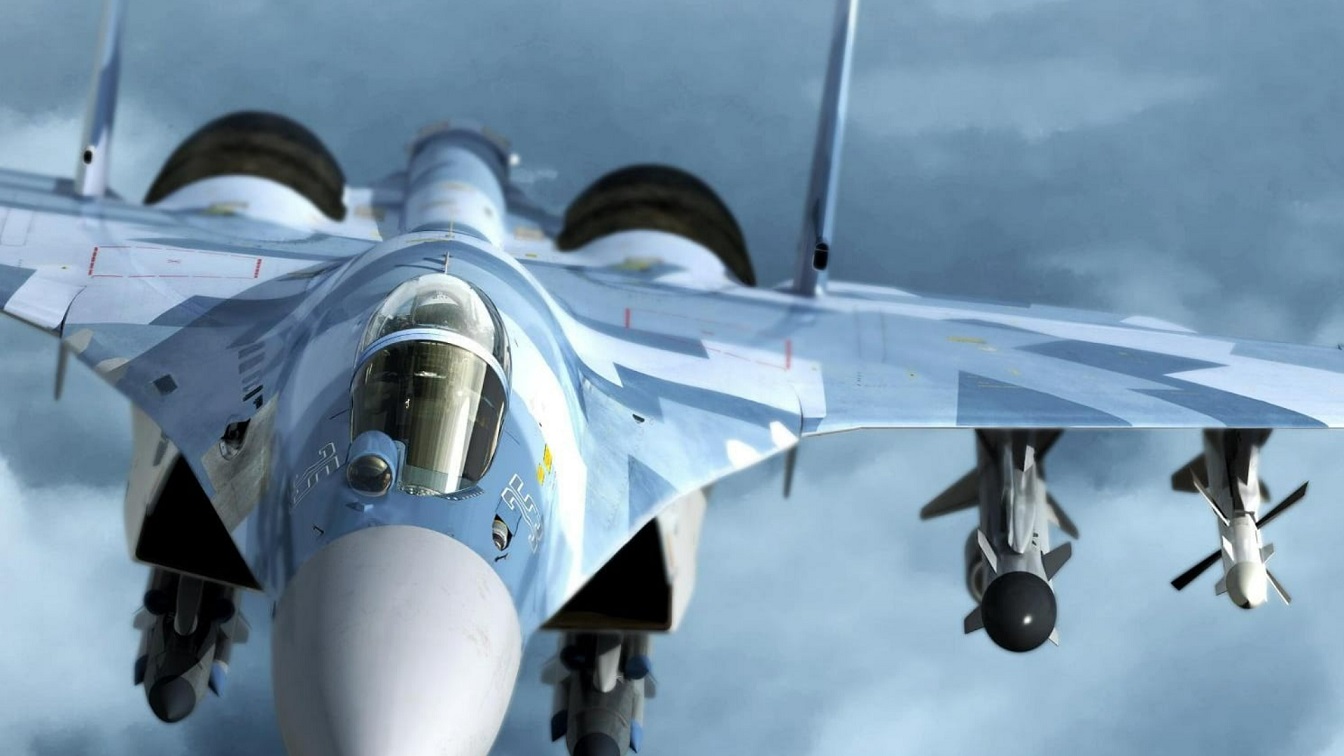Is Iran getting Su-35 from Russia? We Have An Update To Share – Two Ukrainian pilots recently divulged to BBC news that Russia’s fleet of Su-35 fighter jets are their “biggest enemies.”
These maneuverable platforms have stymied Kyiv’s defensive efforts over the last fourteen-plus months of warfare.
While these fourth-generation fighters have not performed as well as the Kremlin hoped, the airframe is still envied by some foreign militaries.
Why Iran Wants the Su-35
The Islamic Republic of Iran has expressed its interest in the Su-35 for years and recently had the opportunity to procure these fighters.
Widespread economic sanctions imposed on both Moscow and Tehran in recent years have brought the two rogue allies closer together.
Since last summer, the Iranian regime has supplied Moscow with the majority of lethal unmanned aerial vehicles (UAVs) it uses in Ukraine.
Industry experts largely suspected that in return, the Kremlin would provide its Iranian counterparts with its own homegrown weapons or military equipment.
What We Know
In March, this suspicion was confirmed when it was revealed Iran would acquire two dozen jets in this calendar year.
Iran’s Air Force Commander Brigadier General Hamid Vahedi and Member of Parliament Shahriyar Heidar revealed the upcoming delivery of Su-35 fighters in an announcement that did not come as a surprise to anyone.
Iran and Russia have maintained a strategic alliance for decades fueled by a mutual contempt for American hegemony.
Since the outbreak of Moscow’s invasion of Kyiv, ties between the two countries have skyrocketed. Last summer, U.S. officials first revealed that Russian delegations had visited Iran’s premiere drone airbase.
Although the regime frequently denied the plausibility that it would support the Kremlin’s offensive war efforts, Iranian officials later admitted to providing lethal drones to Moscow.
A Stronger Military Partnership Is Brewing
Russia did not leave Iran empty handed following thetransferof killer UAVs.
According to a Wall Street Journal report, Moscow supplied its counterparts with advanced digital-surveillance technology in the wake of widespread protests that swept the streets of Iran. This technology aided the regime’s suppression of protests and surveillance of dissidents.
While this transaction coincided with the shipments of Iranian-drones to Russia, a larger prize was in the works.
In early February, Iran released images of its new “Eagle 44” air force base. In the footage, silhouettes of fighter jets stored at the air base was discovered by several news outlets.
Iran’s mission to the United Nations confirmed that “The Sukhoi-35 fighter planes are technically acceptable to Iran, and Iran has finalized a contract for their purchase.”
The Sukhoi Su-35: Specs and Capabilities
During the Cold War, Russian engineers began developing a new fighter platform that could effectively counter America’s F-14 Tomcat and F-15 Eagle fourth-generation fighters. Similar to many of Russia’s newer fighter airframes, the Su-35 was derived from the Soviet-era Su-27 air-defense jet.
Designated by the North Atlantic Treaty Organization (NATO) as“Flanker-E,” the Sukhoi-designed fighter is referred to as a “fourth-generation-plus” jet by Russian officials. As summed up by the United Aircraft Corporation (UAC), the Flanker-E “combines the qualities of a modern fighter (super-maneuverability, superior active and passive acquisition aids, high supersonic speed and long range, capability of managing battle group actions, etc.) and a good tactical airplane (wide range of weapons that can be carried, modern multi-channel electronic warfare system, reduced radar signature and high combat survivability).”
Ordnance-wise, the Su-35 can pack a punch. The fighter possesses 12 hardpoints for carrying external weapons, two are positioned on the underside of the fuselage, one is stored under each engine and both wings have four hardpoints. Among the air-to-air missiles the Su-35 can sport are the Vympel R-27, the Vympel radar-gioded medium-range R-77 and the Vympel short-range infrared-guided R-73E. The Flanker-E can also carry up to 17,000 pounds of air-to-ground munitions in addition to its Gryazev-Shipunov GSh-30-1 30mm cannon.
Considering the bleak state of Iran’s current aerial arsenal, introducing the Su-35 is a significant feat for its air force. As Tehran and Moscow continue to buddy up, additional weapons transfers are likely to transpire.
MORE: The F-35 Now Comes in Beast Mode
MORE: Why the U.S. Navy Tried to Sink Their Own Aircraft Carrier
Maya Carlin, a Senior Editor for 19FortyFive, is an analyst with the Center for Security Policy and a former Anna Sobol Levy Fellow at IDC Herzliya in Israel. She has by-lines in many publications, including The National Interest, Jerusalem Post, and Times of Israel. You can follow her on Twitter: @MayaCarlin.

